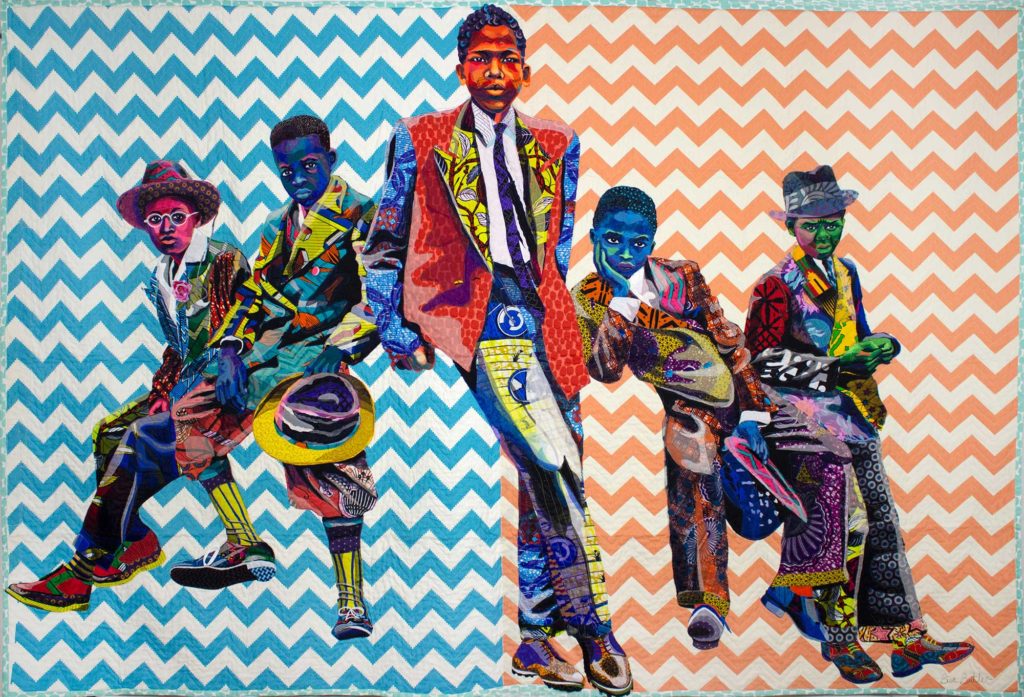
cotton and silk by Bisa Butler via claireoliver.com
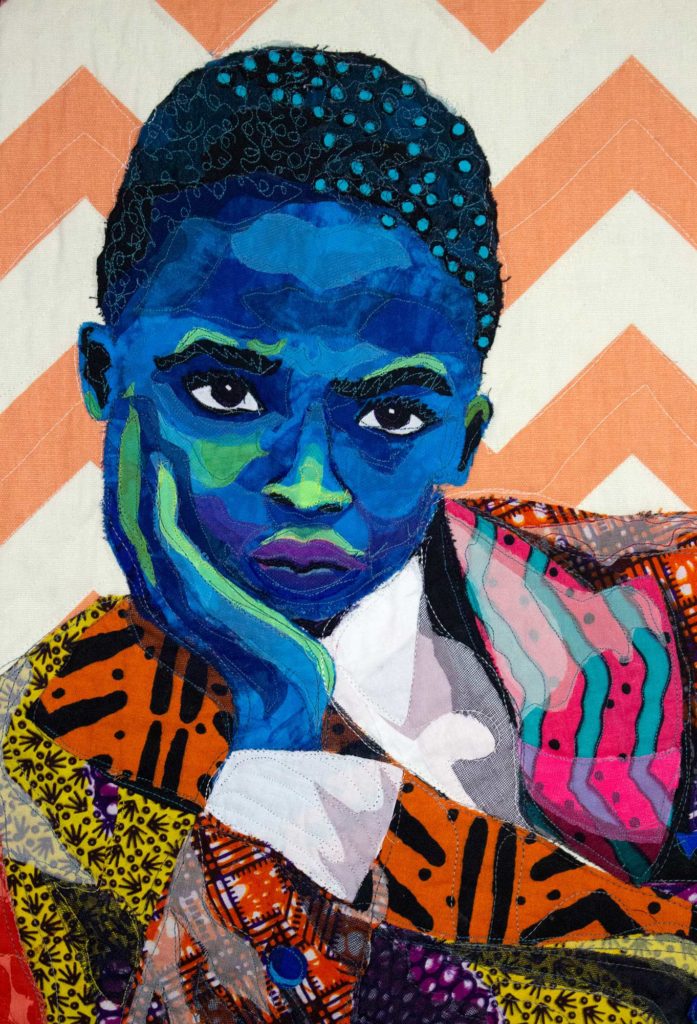
cotton and silk by Bisa Butler via claireoliver.com
Experiencing the artwork of Bisa Butler is like a wave of emotions washing over you. Her portraits, crafted by quilting treasured scraps of colorful African fabric, are layered, complex and mysterious. She seems to connect with the souls of the people she portrays in her work. You begin to imagine their life stories by taking in their facial expressions, illuminated in the bright textiles she uses as a medium.
She finds her subjects by recruiting family members or by hunting for interesting looking unknowns in historical photographs. Butler focuses on the Black experience, capturing the spirit of the people she crafts in her work, with a lot of patience and care.
Butler, who is a fiber artist, a teacher, a wife, and a mother, began her journey as an art student at Howard University. She had a difficult time finding her voice while taking traditional fine art classes like painting and drawing. While pregnant with her first child, the smell of paint made her sick. She needed a new medium. Coming from a family of quilters, incorporating textiles into her work seemed like the natural next step.

Growing up with a mother from New Orleans and a father from Ghana, Butler was inspired by the culture of her heritage. She uses West African wax printed fabric, kente cloth and Dutch wax prints in her portraits, “to communicate that [her] figures are of African descent and have a long, rich history behind them.”

quilted and appliquéd cotton, wool and chiffon via claireoliver.com
The radiance of her vibrant color palette, particularly on her subjects’ skin tone, isn’t purely for aesthetic purposes. Her professors at Howard were from the AfriCOBRA movement, an African-American artists’ collective formed in Chicago in the 1960’s, who came up with their own methods that did not follow those of the European Old Masters. The art of the AfriCOBRA movement incorporated influences from free jazz, bright, “kool-aid” colors, and ideas expressing spiritual identity. Butler chooses to use bright colors as the skin tone of the figures in her work “because these colors are how African Americans refer to our complexions.”
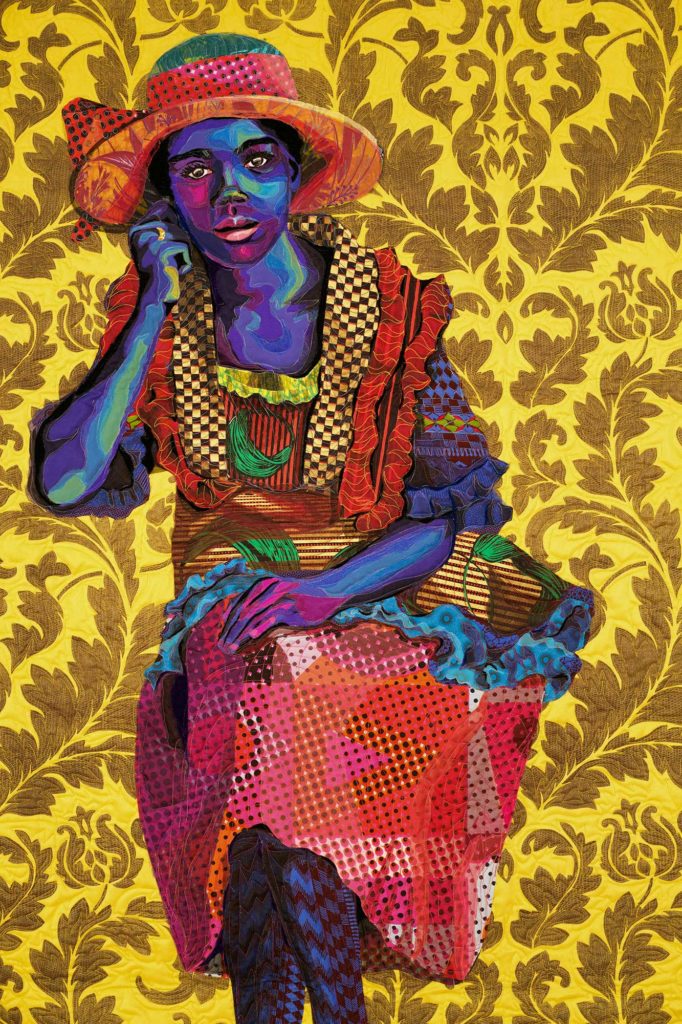
(detail) Cotton, silk, wool and velvet quilted and appliqué via claireoliver.com
Bisa Butler sees herself as a hybrid between a quilter and a painter. You can see why she thinks this way the closer you inspect her pieces. All of the plains in the faces of her subjects are brilliantly articulated and layered with a mastery of hues. The palette she uses to create dimension is complex yet harmonious. She stays true to the three dimensional shadows of the original photograph – her quilts have a great deal of depth. Her sophisticated use of color and texture in order to amplify all of the details in the photos she is replicating makes the figure appear to almost jump out of the quilt.
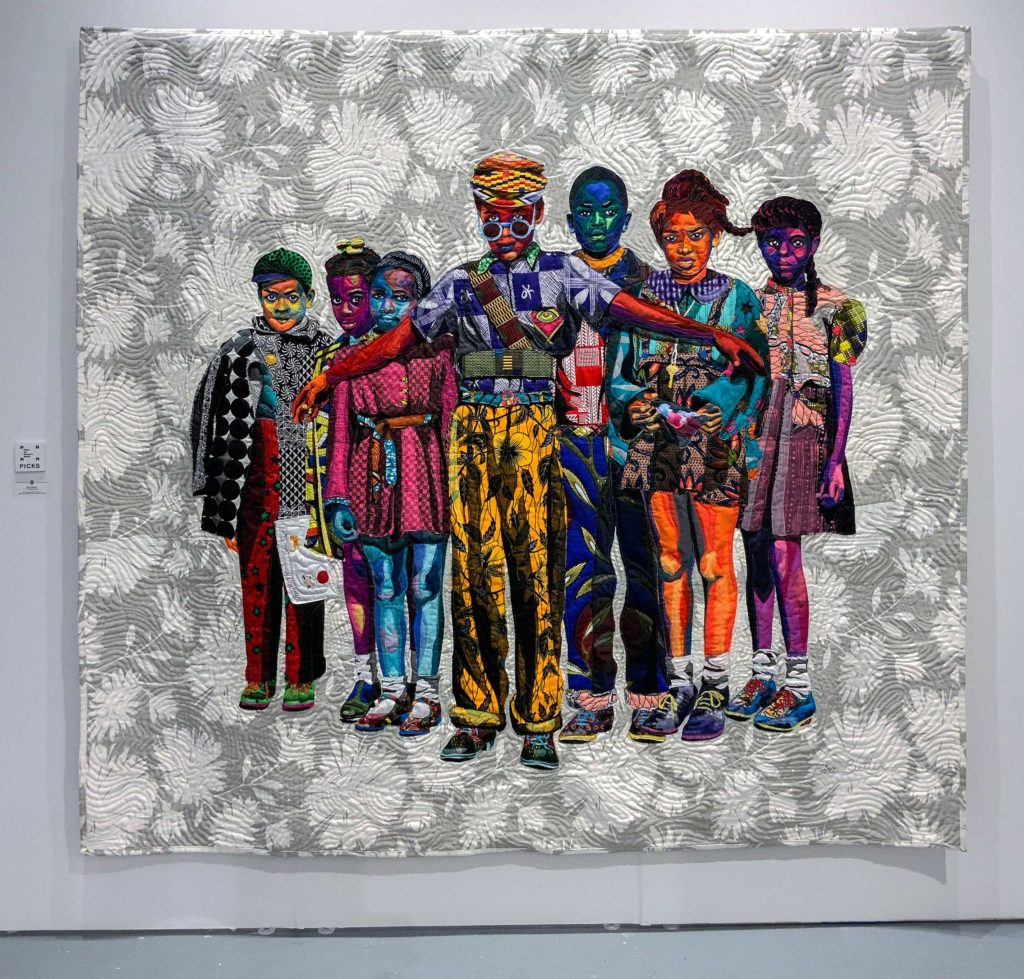
quilted and appliquéd cotton, wool and chiffon via claireoliver.com

Tradition is an important virtue in Butler’s artwork. Tradition in the artistry passed down from her mother and grandmother, tradition in the Ghanaian fabrics she works with in the spirit of her father, and the tradition of quilting itself in the African American community.
During the time of slavery in America, some of the tasks assigned to the enslaved women were weaving, sewing and quilting. They were able to pick up this skill and utilize it to keep their families warm, using scraps of fabric they were able to salvage. Quilting even became a clever tool used to make their way to freedom via the Underground Railroad. Quilts were created with secret messages, marking escape routes and safe houses for runaway slaves.
Looking into the eyes of the people represented in Butler’s artwork is a moving experience. She captures the spirit and the emotion of her subjects in a poignant way. It’s like she breathes life into the photographs she replicates – the color, pattern and texture evoke a very specific feeling, unique to each lifesize piece. She brings out the aura of each person she represents, almost like you are looking into their soul.
“Bisa Butler: Portraits,” is currently open at the Katonah Museum of Art in Katonah, New York through October 4th, 2020.

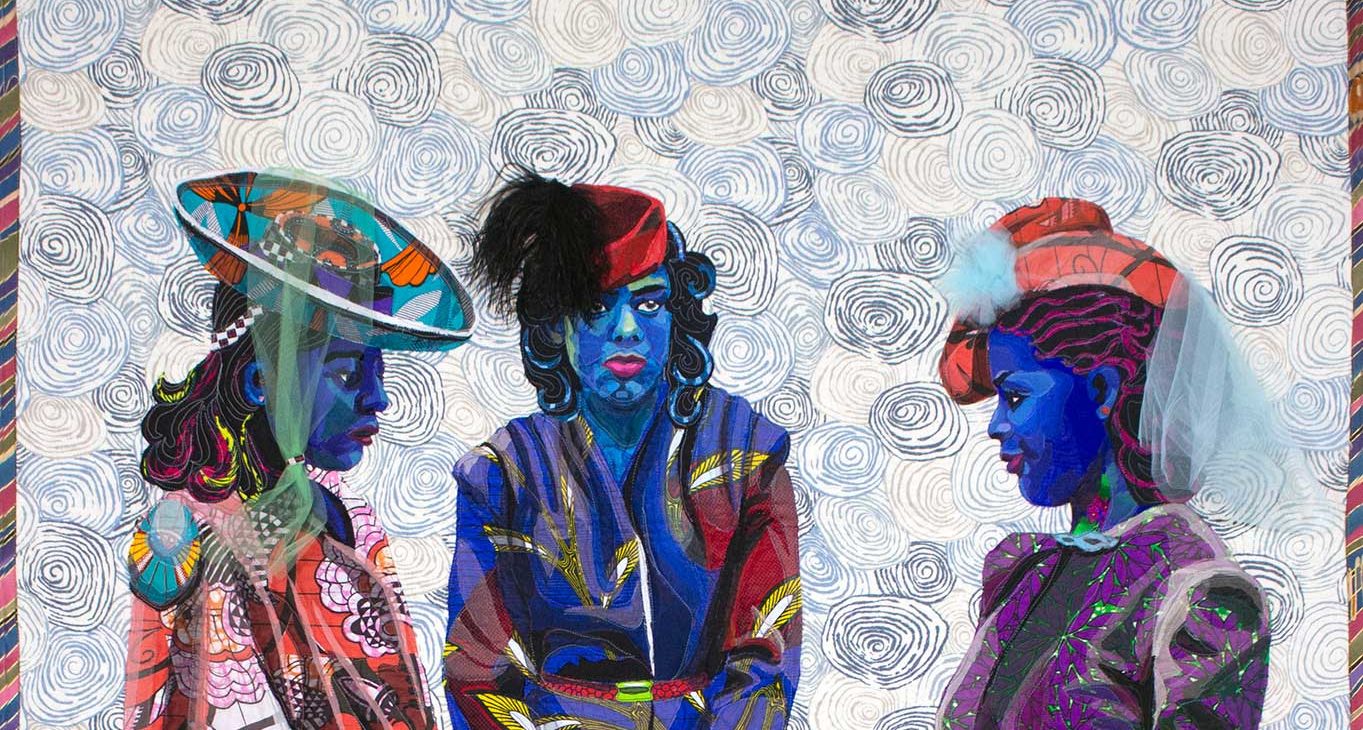
 RSS
RSS Feedly
Feedly